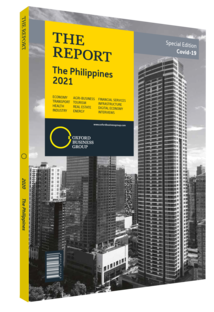How will the energy mix look in the post-Covid-19 Philippines?
Travel restrictions and the suspension of industrial activities around the world due to the Covid-19 pandemic have led to an unprecedented drop in global emissions. According to data from the Helsinki-based Integrated Carbon Observation System (ICOS), by the first week of April 2020 daily carbon emissions had fallen by 17% against mean 2019 levels, with some countries experiencing a 26% fall in CO output. The fall was the sharpest on record, with global emissions dipping to levels last seen in 2006. This was a far greater drop in both absolute and percentage terms than was experienced at other comparable moments in history, such as the Arab oil embargo of 1973, the collapse of the Soviet Union or the 2008-09 global financial crisis. However, as lockdown measures have eased and economic activity has resumed, emissions have also increased. ICOS statistics found that by June 10, emissions had rebounded to just 4.7% below pre-lockdown levels, with the recovery being quicker than many had expected.
Global Energy Investment
This development has led analysts to conclude that austerity alone will not be enough to adequately reduce emissions while facilitating economic growth, and that environmentally friendly solutions will be necessary to ensure future sustainable development. The call for more green investment was bolstered by the release of a report from the Paris-based International Energy Agency (IEA) in May 2020, which found that global investment in energy was set to fall by 20% – some $400bn – that year. The agency said that the bulk of losses will be borne by the oil and gas industry.
A separate IEA report noted that, although newly installed renewable power capacity was expected to decline by 13% in 2020, the green energy segment was proving disproportionately resilient to the impacts of the pandemic. Indeed, there have been some large investments made in clean energy and technologies since the outbreak of Covid-19. Notably, in June 2020 US multinational Amazon announced that it was creating a $2bn venture capital fund to invest in renewable and environmentally sustainable technology. The Philippines, meanwhile, approved two wind power projects with a combined generation capacity of 1.2 GW in late March 2020, and Vietnam – which has been the leading installer of solar power in ASEAN over the past couple of years – saw local company BCG launch a 330-MW solar project in the central province of Binh Dinh. In Japan, which has traditionally been one of the largest investors in fossil fuel projects in South-east Asia, two of the country’s largest banks – Sumitomo Mitsui Banking Corporation and Mizuho – announced commitments in April to curb financing of new coal power projects.
Challenges for Renewables
While the outlook for renewables is largely positive – and most countries in the world are signatories of the Paris Agreement on climate change, which requires them to reduce their greenhouse gas emissions – there are concerns that some nations may prioritise economic growth over environmental concerns as they emerge from lockdowns. Some analysts have argued that despite the drop in global emissions, Covid-19 will actually prove to be damaging to the environment. This is especially pertinent for emerging markets under significant economic strain, particularly if they can tap domestic hydrocarbon resources. In South-east Asia, countries such as Indonesia and Vietnam still have significant coal deposits, viewed in some quarters as a cost-effective option for boosting power generation. These issues have been compounded by the crash in global oil prices that accompanied the outbreak of the virus. While this has had a negative effect on hydrocarbon companies worldwide, cheaper oil could incentivise the use of fossil fuels over renewable energy during the recovery phase. In May 2020 Fatih Birol, executive director of the IEA, told international media that although renewables were expected to be less affected than fossil fuels, the overall drop in energy investment in 2020 could slow the transition towards renewable sources of power.
You have reached the limit of premium articles you can view for free.
Choose from the options below to purchase print or digital editions of our Reports. You can also purchase a website subscription giving you unlimited access to all of our Reports online for 12 months.
If you have already purchased this Report or have a website subscription, please login to continue.

